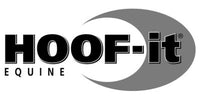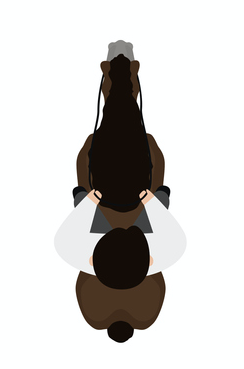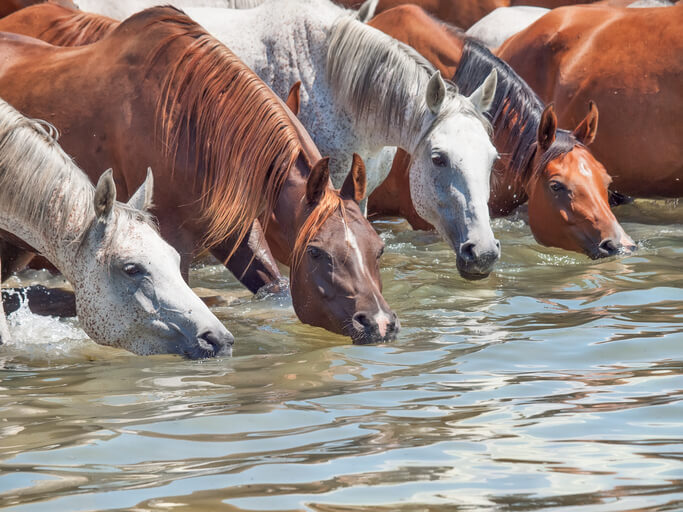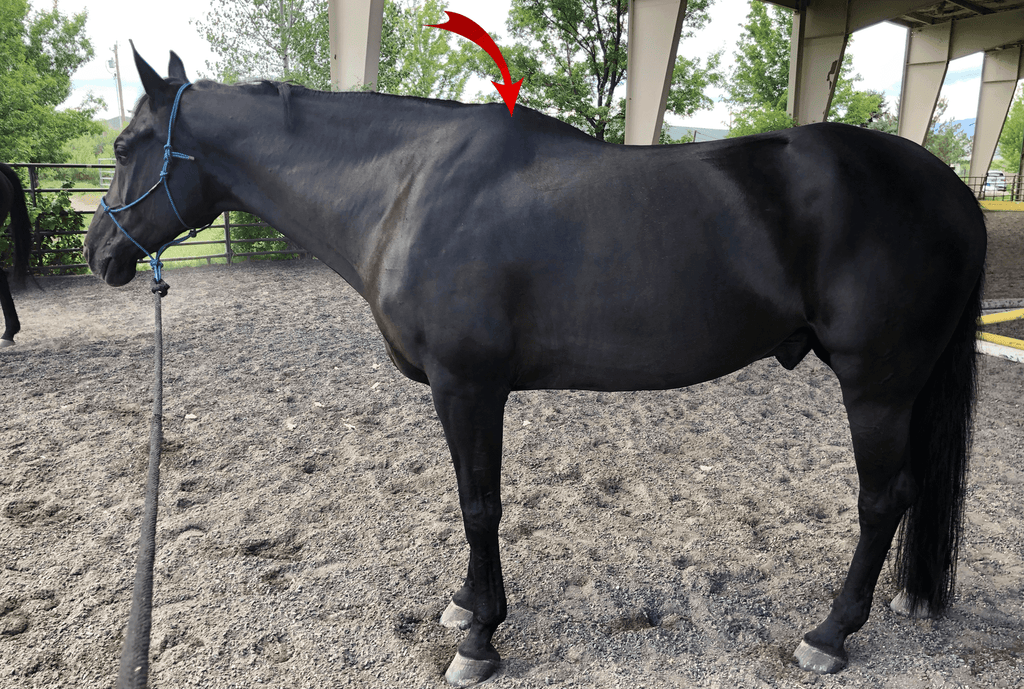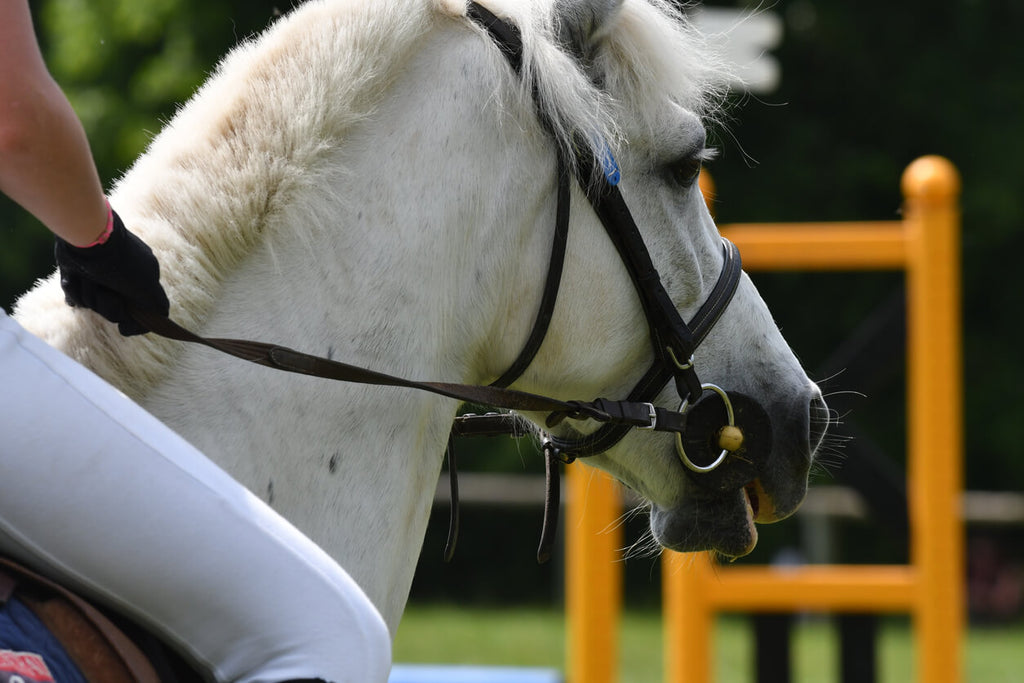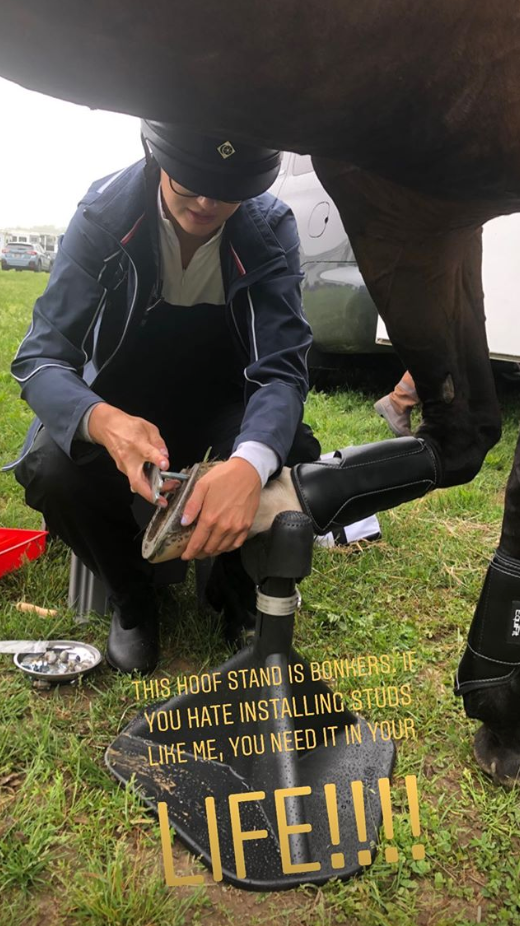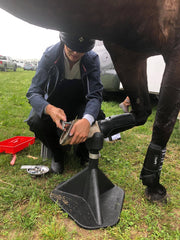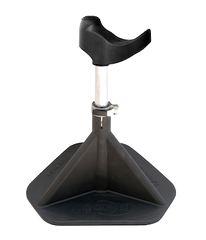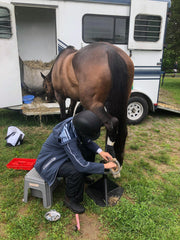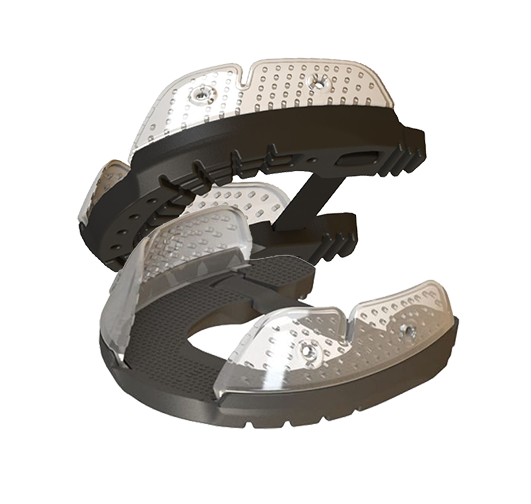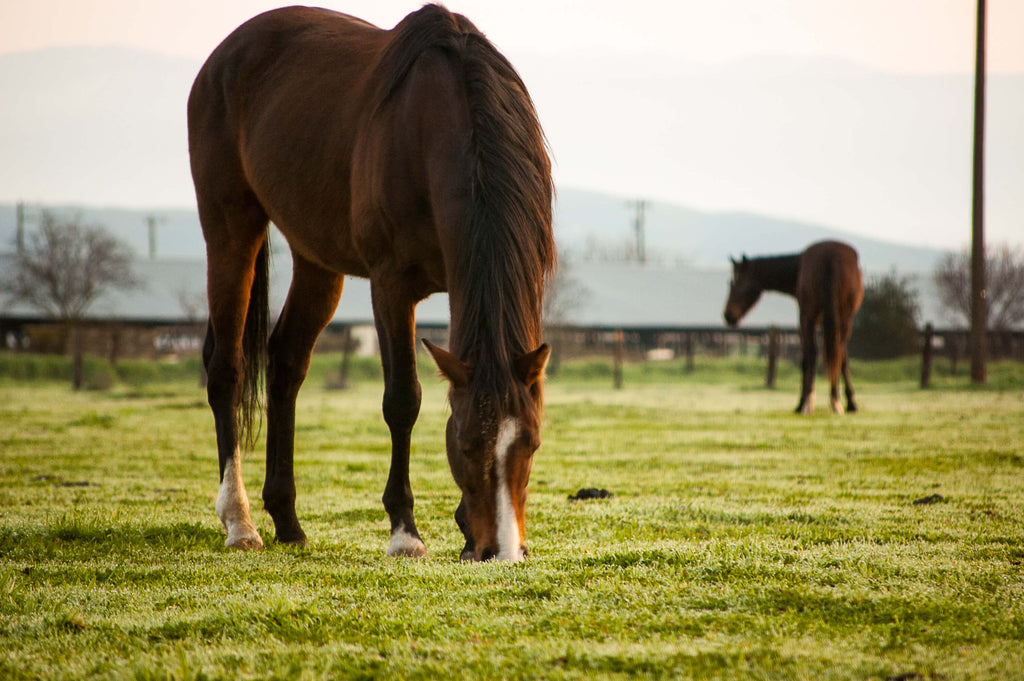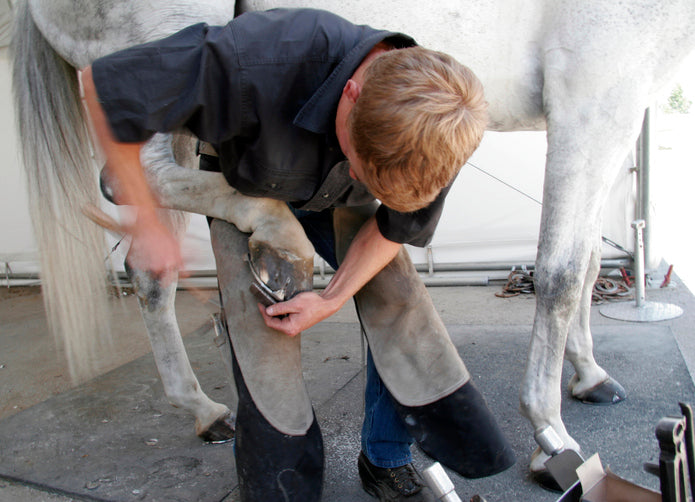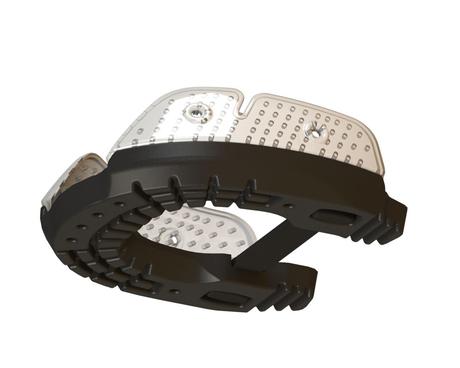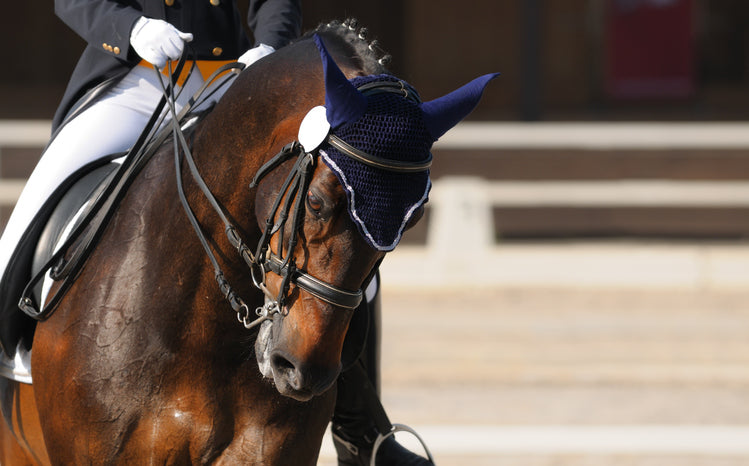5 exercises for a better seat
In this blog we will share 5 exercises you can do to improve your position when you ride.
Stretching your legs and hip-flexors
You don’t want to just plop yourself on your horse and go. Stretching before you start is important to loosen your hips and legs and improve the direct contact with your horse.
With your feet out of the stirrups, bring one knee up and over the front of your saddle with your leg against your horses’ shoulder. Relax your leg into this position and let it sit here for a minute or two.
Then bring your leg back down to a relaxed position out of the stirrup and let it stretch downward towards the ground. This exercise targets your core and thigh muscles and will improve your position in the saddle. Repeat both stretches with the other leg.
Make sure you stay square in your shoulders when performing theses stretches and focus on letting your hip-flexors stretch when your legs are down to your horses’ sides.
At the trot: One-sided no stirrup work
Once you have warmed your horse up a bit take up a trot and practice removing one leg from the stirrup for a few strides, putting it back in the stirrup and then taking the other foot out of the stirrup. Keep alternating every few strides, being mindful of your position when executing this exercise. Are you falling to one side? Is one leg putting more pressure on the horse than the other? Are you gripping with your legs more tightly? Make sure that your horses balance doesn’t change, his shape doesn’t change and that you are both staying relaxed throughout the exercise. Focus on quality not quantity and make sure you end the exercise on a positive note for your horse.
At the Canter: Half seat to Full seat
This exercise allows you to focus on your position while making sure that the horse's balance and relaxation doesn't change as you alternate between your jumping position and your full seat position. This is a great exercise when preparing to jump your horse.
At the canter, practice going into your half-seat for 4 to 5 strides and then back to your full seat. Keeping the transitions smooth and your horse moving at the same pace. Be mindful when transition between the two seats that your horse is maintaining the same bend and relaxed canter. Think about your feet and ankles being underneath you and in line with your hips. Keeping your upper body in line and not getting ahead of the horse. Focus on your balance being in your feet and not in your shoulders. Monitor your lower leg while performing this exercise. Is it staying in a position of support or flailing forward? Don’t lower yourself to the saddle to quickly or plop down into the saddle to hard.
Over Cavalettis: Circle of Truth
The circle of truth allows you to improve your consistency over fences and hone in on how your position influences the horse, while at the same time allowing you to focus on the balance of the canter between the cavaletti.
Create a large circle and set up 4 small jumps or rails. Pick a point in the middle of your arena and step 30 feet out towards the outside. Set up 4 small jumps or rails on the circle about 5-6 strides apart from each other. This is a great warm up exercise before jumping and allows you to work on improving the canter between the cavalettis. Really focus on how your seat, leg and reins work together to navigate the cavalettis. Make sure you are using your legs as well as your reins when working in this circle. To challenge yourself, put both reins in your outside hand and rest your inside hand on your thigh or hold it straight out in from of you. This will help you to ensure you are using your core strength. Work on using your leg ques to keep your horses bend around the circle.
Over fences: Gymnastics on a Curve
This exercise highlights the effectiveness of your seat, leg, and upper body in maintaining your horse's balance and straightness through a turn.
This involves four fences or rails set up on a bend of your circle. Make a 20m circle and set fences around it 18 to 20 ft apart. The size of your circle and distance between rails will depend on your horses stride of course, so adjust accordingly. If you have a really small horse or large horse the distances will be different.
Place the rails or cross-rails 6 to 7 steps apart making sure that each step is 3 ft. You can trot through this a few times to make sure of your distance and how much of your outside aid you will need to navigate the circle.
This exercise addresses the ability to keep a turn and not lose your horses shoulders. Use your seat and leg to keep the bend in the circle. Start with rails on the ground to warm up and keep your horse accountable to stay in the center of the fence. You can then try cross-rails or even verticles depending on your confidence level. Don’t let your upper body get ahead and make sure your seat maintains its balance. Engage your core and use your upper body to balance. Take your time through the exercise. You should feel like you can touch your shoulder blades together through the exercise and keep your upper body back and away from the horses’ withers. You can use rails on two and cross rails on two. Once you have done it both directions evenly with rails on the ground, move to 4 cross rails. You can also use verticals when you feel confident that you and your horse have the exercise down. This is a great warm up exercise before jumping. Don’t over do these exercises doing them maybe 4 or 5 times through.
